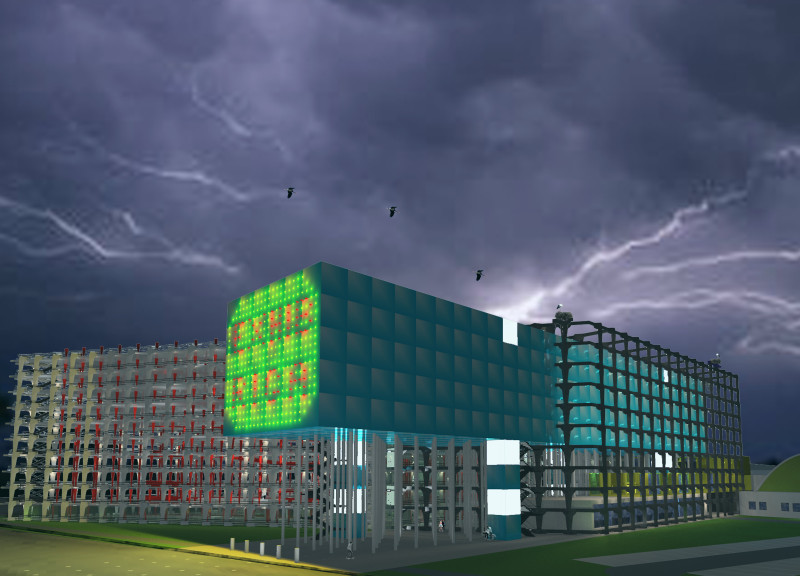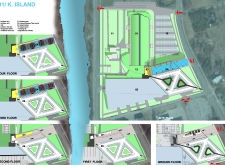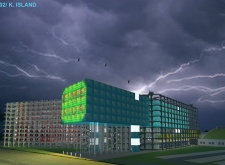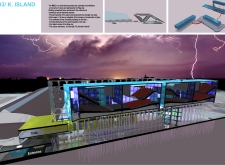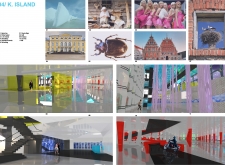5 key facts about this project
# Analytical Report: Architectural Design Project "K. ISLAND"
## Concept and Context
Located in Riga, Latvia, the design of K. ISLAND seeks to create a multifunctional center that fosters cultural engagement and community unity. Drawing inspiration from the city's historical relationship with water, the architectural proposal employs a metaphor of ice and igloo construction, resulting in spaces that reflect Latvian traditions while incorporating contemporary functionality. The center aims to serve as both a cultural hub and an exhibition space, facilitating events that highlight local heritage and promote interaction among residents and visitors alike.
## Site Layout
The site plan features a strategic arrangement of diverse functional areas, including exhibition halls, management offices, and conference rooms, alongside outdoor gathering spaces. The triangular shapes of the exhibition halls generate a dynamic silhouette that encourages visitor movement and interaction. Design elements such as well-defined pathways and surrounding green areas enhance the user experience and provide a connection to the natural environment.
## Architectural Elements and Materials
### Materiality
The choice of materials reflects a balance between functionality and aesthetic value. Reinforced concrete is used for structural support, ensuring stability. Glass facade panels are integrated to optimize natural light, promoting transparency and connection with the outdoors. Additionally, steel frameworks provide resilience while introducing an industrial feel, and composite materials for the façade enhance energy efficiency and modern appearance.
### Unique Design Features
Key architectural features include ice-inspired triangular forms that echo local environmental characteristics, vertical greenery that brings nature into the urban context, and flexible interior spaces that facilitate a variety of events through movable walls. An illuminated facade offers visual interest at night, enhancing the center's role as a focal point for nighttime activities and cultural events.
## Design Outcomes
### Cultural Connectivity
Dedicated spaces for exhibitions and festivals are integrated into the design, allowing for cultural expressions that connect contemporary artistic endeavors with historical narratives. The center's layout fosters community engagement through open areas and public amenities, encouraging interaction and participation in educational workshops and cultural performances.
### Environmental Consciousness
The selection of sustainable materials and design strategies promotes eco-friendly practices among users while aligning with the overall design ethos. Reflective surfaces and strategic glass placement work together to minimize energy consumption and maximize light diffusion, highlighting the project’s commitment to environmental responsibility.


